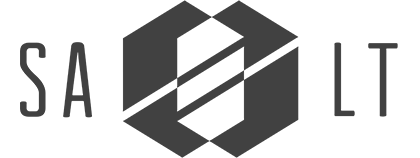We have been covering a series on Creative Meetings and we end it with our friend Seth Bartlette. Seth is a producer and has worked with many people on projects and events. Seth’s insight on the creative meeting process comes from his extensive work as a producer. If you haven’t had a chance to read Part One or Part Two in the series, I encourage you to check them out.
Invite The Right Mix of Attendees
Let me start by saying that inviting a specific variety of people into this process is key. I typically invite about 6-8 people into this group and in my mind they each bring a different skillset to the table.
For me, this group includes a designated note-taker (the most often over-looked person), the facilitator (which might be you), 1 or 2 people that generate new ideas, 1 or 2 people that connect ideas, and last would be storytellers.
Accentuate the Experience with an Inspiring Environment
Most creative people their minds are influenced by their environment, so white walls, no windows, fluorescent lights and uncomfortable seats might not work. Of course I realize that there are times this is unavoidable but with a little planning ahead this can be achieved. Look for a space with natural light, unique architecture, warm or bright colors, texture and comfortable seating.
Begin by Building the Creative Canvas
A long time ago, I had a friend tell me about one of their favorite creative session facilitators. When I asked him about his most helpful takeaway, this is what he told me: “{The facilitator} spent the first part of the meeting building a canvas for us to paint upon.” I never forget that. If you properly define and explain the “canvas” by conveying the expectations, goals and values (of the client, event or project), you can create a more efficient process. Your team will be less likely to be “painting” outside of the canvas if they begin by hearing important factors and filters like: budget, feedback from prior experiences, schedule, etc.
Timing Can Effect The Process
Again, this isn’t rocket science, but I’ve found that strategically managing the schedule of the day yields better results. I’m not just talking about time management, but also energy management. Here’s some quick principles:
- Movement – create shorter blocks of time (30 min) for different activities and focus sessions.
- Post-Lunch – after lunch many lose steam so don’t plan those long conversations after lunch. It is best to plan fun activities during that time and keep people moving.
- Time Zones – If you having invited someone that is from out of town and a different time zone make sure to be mindful of meal times, coffee breaks for them.
- Spaces – Make sure to leave space for the brain to process. It has been my experience that some people need time to process and connect the dots. I have found that a 2 day session might be more beneficial, because you will give the attendees time to process and hopefully bring to the table feedback and ideas.
Avoid the Temptations to Copy and Paste
Another favorite quote of mine is, “Steal like an artist” – Every Creative Ever. And yes, there’s definitely truth to the statement, “There’s nothing new under the sun.” But that being said, I’m often surprised by creative processes which resort to a copy/paste mentality. For me, it minimizes the power and potential of the group gathered to brainstorm. Now, I’m a firm believer in doing a “show and tell” with video clips, images, etc, where they’re used for inspiration. So, instead of simply copying what someone else has already done, go back to Tip #3. Apply the stated objectives, values and story to that inspiration and see if something new (or a variation of it) emerges from that process. Yes, inspiration is everywhere… but so is the ability for your group to innovate upon it.
Add Space for “Idea Crushes” to Fade
I don’t know about you, but I often “crush” on ideas. Do you know what I mean? Someone shares something in a group setting that blows my mind. Immediately everyone clings to it, falling in love. But, when you take that idea out on a first and second date, you realize you may have jumped the gun before you really got the chance to know it very well. Wow! What a terrible analogy. I hope you’re following what I’m suggesting. After a creative session is over and all of the ideas have been captured, do yourself a favor and walk away from it for a while. Do another project or task. Give it a couple days or even a week. Then, come back to it all with fresh eyes. Perhaps you can even vet that idea with some trusted creative friends who weren’t a part of the meeting. Make sure you’ve taken these ideas on enough dates before you’re ready to marry them. OK, I’m leaving that analogy alone. You get the point!
Know When to Chase the Rabbit and Know When to Shoot It
Sounds violent doesn’t it? But, I promise I have a point. During the fun brainstorming process, the idea-sparking participants will propose an idea that seems to be headed down a metaphorical rabbit-trail – with no end in sight. Chasing the rabbit, isn’t a bad thing, original and innovative gems have come from this. However, it takes the facilitator to have the intuition to know when an idea is headed too far off topic or objective (once again Tip #3). When this happens it is up to you to shut it down (to shoot the rabbit) in a very polite way and move on. It isn’t personal.
Connect The Dots
One of the final steps in the process is to connect all of the dots. Look for connections and find the trajectory from all of the great ideas. Once you come up with a plan, I encourage you to present it to a small group before presenting it to your pastor, client etc. This will help in making sure the message is clear and compelling.


